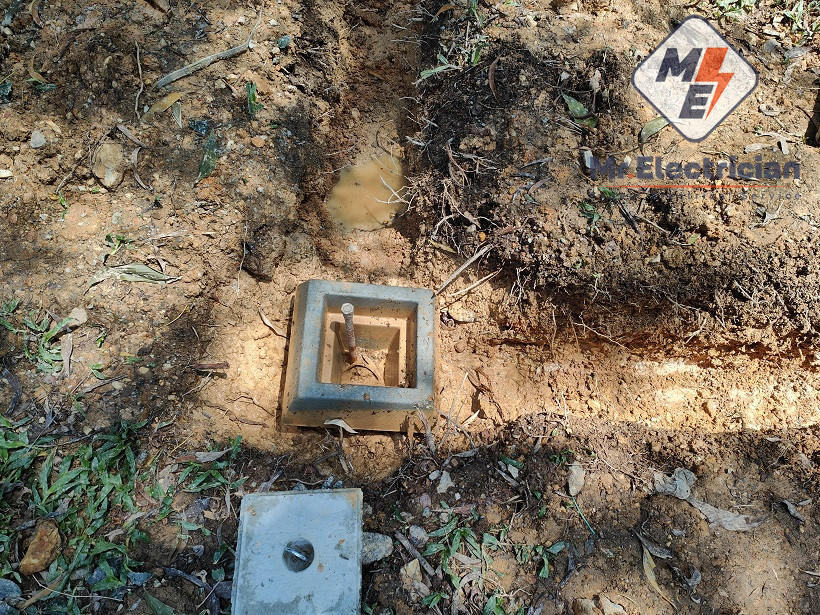Protect Your Home with a Lightning Strike Trap (LST)
In a country like Malaysia, where thunderstorms and lightning are common, protecting your home from lightning strikes is not a luxury; it’s a necessity. One of the most effective tools for this protection is the Lightning Strike Trap (LST), also known as a Lightning Surge Protector (LSP). But even the best LST is useless without proper earthing.
This blog post explains how LSTs work, why older Malaysian homes are at high risk, and how poor workmanship by some wiremen can leave you exposed to danger.
What is a Lightning Strike Trap?
A Lightning Strike Trap is a device that catches or redirects a lightning surge before it can damage your home’s electrical system. When lightning strikes a nearby power line or the building itself, the LST absorbs the surge and channels it safely into the ground through the earthing system.
If the LST is working properly and the earthing is solid, the lightning surge is discharged into the earth without any harm to the electrical system. In this case, the Residual Current Circuit Breaker (RCCB) will not trip because the surge has already been neutralized.
However, if the surge is too powerful or the LST fails to divert all of the current, only then will the RCCB trip as a backup protection. This cuts off power to prevent further damage or injury.
Why Earthing is Still Critical
Even with a high-quality LST, a proper earthing system is essential. The LST needs a low-resistance path to send the surge into the earth. Without this, the lightning energy will find another way, often entering your home’s wiring and damaging appliances, or worse, shocking people who touch metal parts or electrical equipment.

Old Houses in Malaysia: A Hidden Risk
Many houses in Malaysia were built 30 to 50 years ago, a time when earthing systems were not mandatory. Today, these homes are everywhere and most of them do not have proper earthing.
As a result, residents may feel minor electric shocks when touching fridges, water heaters, washing machines, or even metal parts of the gate. This is a warning sign that leakage current has no proper path to the ground and your house is vulnerable to lightning and electrical faults.
If lightning strikes a home like this, the LST may not be able to protect it simply because there’s no effective earthing system to support it.
Beware of Poor Workmanship
Sadly, not all wiremen take earthing seriously. Many homeowners assume that when they hire someone to install wiring or fix a problem, the job will be done correctly. But in reality, some wiremen cheat by skipping proper earthing procedures to save time and money.
They may bury a short copper rod without proper contact with the soil, use low-quality clamps, or simply pretend the system is earthed. This kind of shortcut puts your entire home and family at risk.
100mA vs 30mA RCCB: Why It Matters
Another major issue is that many homes still use 100mA RCCBs, which were standard in older installations. However, a 100mA RCCB is not sensitive enough to react quickly to small leakages or fast surges caused by lightning. In many cases, the surge can pass through and damage your home’s electrical appliances before the RCCB even reacts.
This is why it is highly recommended to upgrade to a 30mA RCCB. It is more sensitive and can trip much faster during minor leakage or surge events, providing better protection. Especially when combined with an LST and a proper earthing system.
With a 30mA RCCB in place, even if the LST fails to handle the full lightning surge, the RCCB can still act as a second line of defense by cutting the power before serious damage occurs.
What You Should Do
If you’re unsure about your home’s protection, here are a few steps you can take:
- Inspect your earthing system – Hire a reliable electrician to test the earth resistance.
- Install or upgrade your LST – A high-quality Lightning Surge Protector can make a huge difference.
- Check for leakage current – Any mild shock from touching appliances is a red flag.
- Upgrade your RCCB – Switch from 100mA to 30mA for faster response time and better safety.
- Don’t cut corners – Invest in proper materials like solid copper rods, certified earth clamps, and quality surge protectors.
Don’t Let One Strike Destroy Everything
A Lightning Strike Trap is your first line of defense against lightning surges. But it’s not a magic bullet. Without proper earthing and the right type of RCCB, even the best LST can’t do its job effectively.
With many old homes in Malaysia lacking earthing and some modern installations done poorly, the risk is real.
Protect your home the right way. Use a proper LST, ensure your earthing system is up to standard, and replace outdated 100mA RCCBs with 30mA models. It’s a small investment that could save your appliances, your property, and your life.
Need help with electrical repairs or earthing in Klang?
Call Alex at 012-870 2699 for fast, reliable service.


